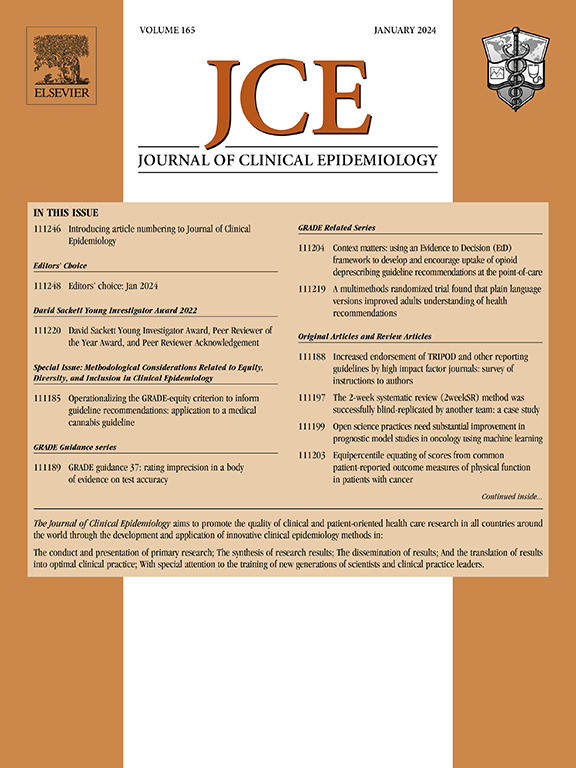Cochrane综述中人工智能辅助和人工生成的简单语言摘要的比较:一项随机试验方案(HIET-1)
IF 5.2
2区 医学
Q1 HEALTH CARE SCIENCES & SERVICES
引用次数: 0
摘要
系统综述的简单语言摘要(pls)以可理解的语言呈现复杂的健康证据。人工智能(AI)的进步,特别是大型语言模型,可能会增强pls的生成。该方案描述了一项随机,平行组,双臂,非劣效性试验,比较人工智能辅助与人工生成的pls。18岁以上、精通英语的成年人将通过观众招募平台在线招募。参与者被随机分配(1:1比例)到(1)干预组:根据最近的Cochrane综述,有3名人工智能辅助的公共服务提供者;(2)对照组:3张人工生成的Cochrane pls。主要结果是理解(与QUEST的理解维度一致),通过对每个摘要的10项多项选择问卷进行评估,根据Cochrane PLS模板部分构建。次要结果是可读性、信息质量、安全考虑和感知可信度。本研究旨在为将人工智能技术整合到卫生传播中提供见解。其调查结果将为今后向公众传播循证卫生信息的做法提供参考。本文章由计算机程序翻译,如有差异,请以英文原文为准。
Comparison of AI-assisted and human-generated plain language summaries for Cochrane reviews: protocol for a randomized trial (HIET-1)
Plain language summaries (PLSs) of systematic reviews present complex health evidence in accessible language. Advances in artificial intelligence (AI), particularly large language models, may enhance the generation of PLSs. This protocol describes a randomized, parallel-group, two-armed, noninferiority trial comparing AI-assisted vs human-generated PLSs. Adults aged 18 years or older, proficient in English, will be recruited online via an audience recruitment platform. Participants are randomly assigned (1:1 ratio) to (1) the intervention group: three AI-assisted PLSs based on recent Cochrane reviews; or (2) the control group: three human-generated Cochrane PLSs. The primary outcome is comprehension (aligned with QUEST's Understanding dimension), assessed via a 10-item multiple-choice questionnaire for each summary, structured according to Cochrane PLS template sections. Secondary outcomes are readability, quality of information, safety considerations, and perceived trustworthiness. This study aims to provide insights into integrating AI technologies in health communication. Its findings will inform future practices in disseminating evidence-based health information to the public.
求助全文
通过发布文献求助,成功后即可免费获取论文全文。
去求助
来源期刊

Journal of Clinical Epidemiology
医学-公共卫生、环境卫生与职业卫生
CiteScore
12.00
自引率
6.90%
发文量
320
审稿时长
44 days
期刊介绍:
The Journal of Clinical Epidemiology strives to enhance the quality of clinical and patient-oriented healthcare research by advancing and applying innovative methods in conducting, presenting, synthesizing, disseminating, and translating research results into optimal clinical practice. Special emphasis is placed on training new generations of scientists and clinical practice leaders.
 求助内容:
求助内容: 应助结果提醒方式:
应助结果提醒方式:


